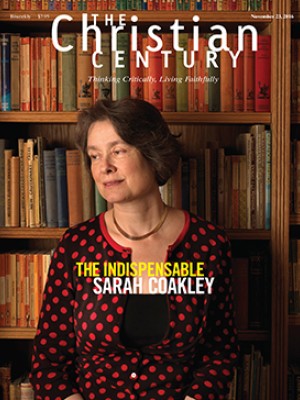Exhibit at Smithsonian captures art of the Qur’an
Islam prohibits the depiction of God or prophets, and some Muslims believe drawing any animate being is also forbidden. Certainly no such images appear in the Qur’an, its central holy book.
So there are no pictures in the first major exhibit of Qur’ans in the United States, The Art of the Qur’an, at the Smithsonian’s Arthur M. Sackler Gallery on the National Mall until February 20. But the more than 60 Qur’ans on display present a visually stunning tour of more than 1,000 years of Islamic history, told through the calligraphy and ornamentation that grace the sacred folios.
“We can convey a sense of how artists from North Africa to Afghanistan found different ways to honor the same text,” said Julian Raby, Sackler director. “They found different forms of illumination and binding to beautify the manuscripts they had copied. But above all they developed different forms of script to express, in a dazzling array of calligraphic variety, the very same text. The results could be intimate; or they could be imposing. But in every case the scribe invested his calligraphy with piety.”
Read our latest issue or browse back issues.
Intricate calligraphy and rich ornamentation made these Qur’ans—which come almost exclusively from the Turkish and Islamic Arts Museum in Istanbul—cherished possessions of some of the most powerful people of the Muslim world. Each comes with a rich story of those who commissioned it, copied it, entombed it, or preserved it.
Many were offered as gifts to forge military and political alliances.
Essentially though, Qur’ans are religious objects, the word of God that Muslims believe was transmitted through the angel Gabriel to the Prophet Muhammad in the seventh century, when Islam was founded. Details within the text and on the margins of the parchment convey the pronunciation of words and the cadence of the verses.
Intricate ornamentation—geometric illuminations in gold, azure, and other brilliant colors—beautify the pages, but also serve a function, said Simon Rettig, assistant curator of Islamic art at the Sackler.
“They help the readers locate him or herself within the Qur’anic text; they tell you when you have to prostrate yourself,” he said, pointing to a complex geometric emblem in an early 14th-century manuscript by Abdallah al-Sayrafi, a master calligrapher who worked in Tabriz, a historical capital of Iran.
Al-Sayrafi was trained in six Arabic scripts and uses three—sometimes writing in gold, sometimes in black—in one of Rettig’s favorite Qur’ans in the exhibit. His illuminations look like multicolored sunbursts and gilded foliage blossoms.
The exhibit, on two floors of the Sackler, also aims to explain that the Qur’an is scripture meant to be chanted and heard.
“Calligraphy is a way to capture the beauty of the orality,” said Massumeh Farhad, chief curator at the Sackler and Freer galleries, which house the Smithsonian’s Asian art collections and exhibits.
Scholars don’t know exactly how scribes wrote Qur’ans centuries ago. Farhad said it’s possible they would inscribe verses as they were recited, each showing reverence through his skill and style.
“That’s why the work of Yaqut is considered so supreme,” Farhad added, referring to the 13th-century master scribe who worked in Baghdad for the last caliph of the Abbasid dynasty. “It has this sort of lightness. It seems to float on the page.”
The exhibit is not intended as commentary on today’s politics, organizers said. Work started on the project six years ago, before sharp rises in Islamophobic rhetoric and violence in the United States and Europe, and before Muslim immigration and culture became a flashpoint in American and European politics.
But the Smithsonian is not sorry for the timing, and it hopes the exhibit can help quell fears of Islam and its adherents.
The Art of the Qur’an may lead some to “reflect on their own assumptions,” Raby said.
As the exhibit makes clear, Muslims refer to Jews and Christians as ahl al-kitab—people of the book. The curators show how the Qur’an, the Torah, and the Christian Bible share variations of the same stories and the same prophets’ teachings. One Qur’an at the Sackler is turned to a sura, or chapter, that explains:
“Step by step, He has sent the Scripture down to you [Prophet] with the Truth, confirming what went before: He sent down the Torah and the Gospel earlier as a guide for people and He has sent down the distinction [between right and wrong].”
The Turkish multinational Koc Holding is the principal sponsor of the exhibit. —Religion News Service






